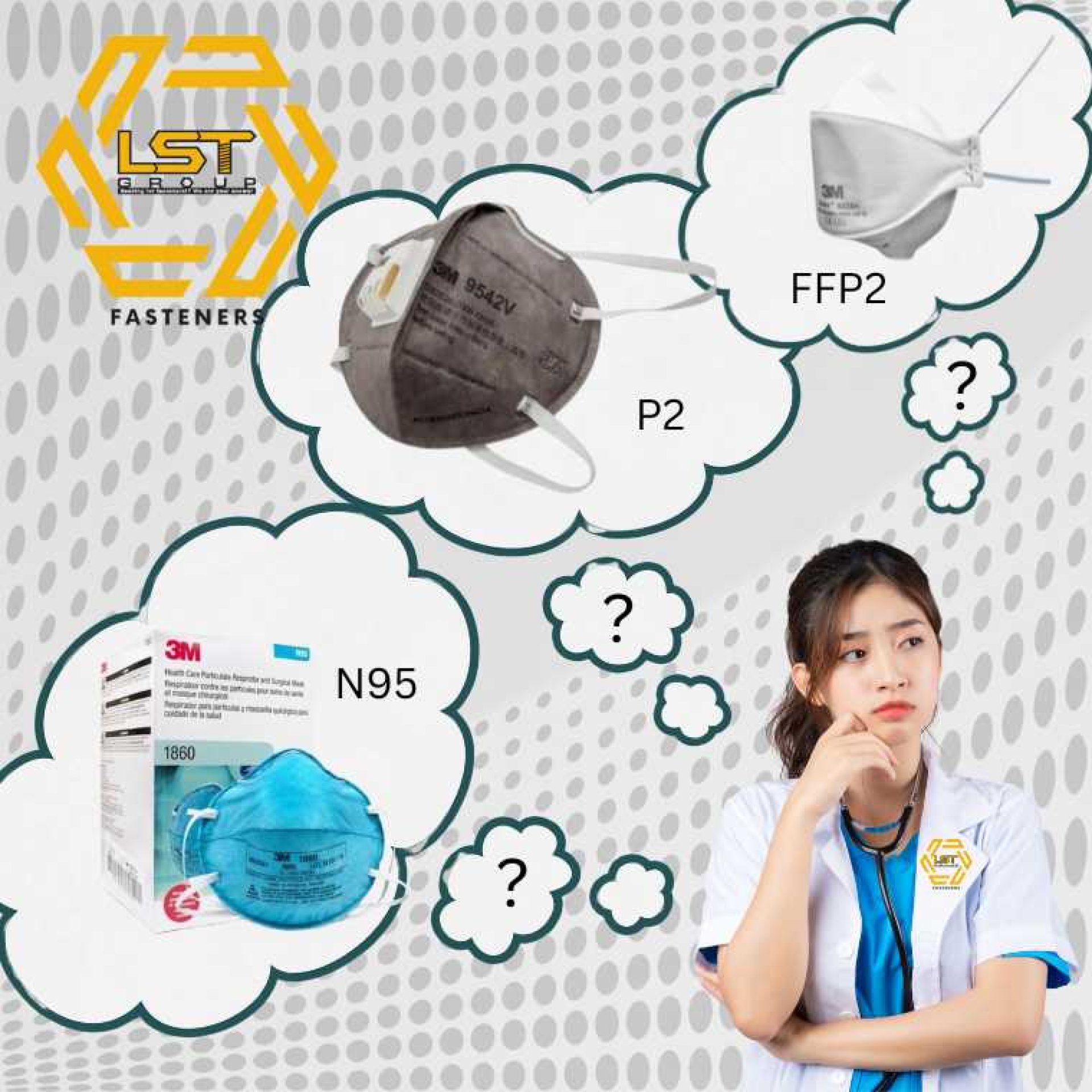How is the N95 mask standard different from masks with P2, KN95 and FFP2 standards?
Last updated: 2 Jun 2024
3433 Views

The mask standards mentioned above are all standards used to evaluate the effectiveness of face masks. To protect the wearer from small dust particles, aerosols, and germs.
Each standard originates from a different region. and has testing criteria Filtration efficiency and different certifications
Sumamry:
Each standard originates from a different region. and has testing criteria Filtration efficiency and different certifications
Sumamry:
- N95, KN95 and FFP2 have similar filtration efficiency (94-95%).
- P2 has a slightly lower filtration efficiency (94%), but it is considered to be in the same standard rank as all three standards above.
- N95 and KN95 tested against smaller droplets (0.3 microns)
- P2 and FFP2 tested with larger droplets (0.6 microns)
- Therefore, if you want to prevent PM2.5 with a dust size of 2.5 microns, which is larger than the size of the dust particles that were tested. As can be seen from the table above. Therefore, you can be confident that all 4 standard masks can protect against PM2.5 dust well.
Related Content
Picking the right size for your 3M coverall is crucial for both comfort and safety. This guide will help you find your perfect fit in just a few simple steps.
9 Jan 2025
There are many reasons, why masks that have received various standards, such as NOISH (USA), EN149:2001+A1:2009 (Europe), GB 2626-2006 (China), are therefore commonly tested at droplets size 0.3 microns or 0.6 microns:
20 May 2024
Something that many people may overlook. But it affects our eyes every day, namely UV rays from sunlight.There are many eye health problems that result from exposure to UV rays without proper protection. Especially among people of working age like us who have to face the sun every day.
1 Jun 2024


